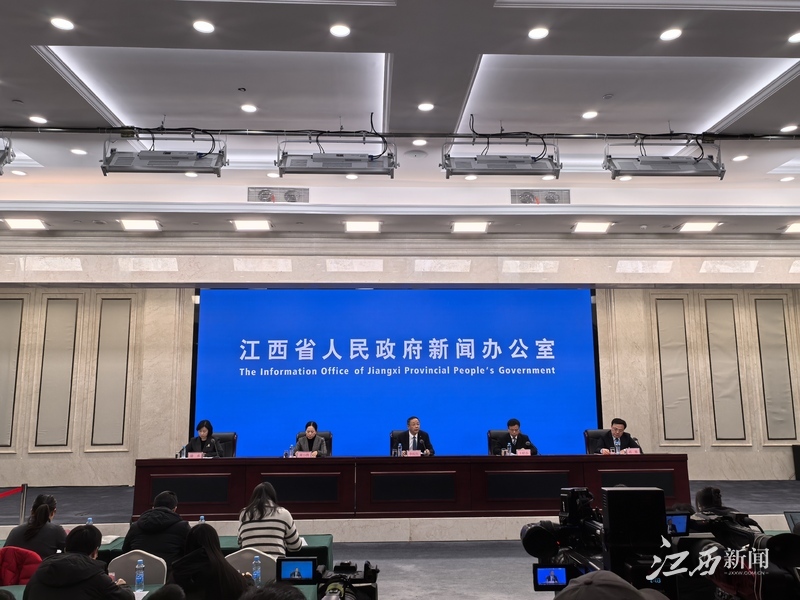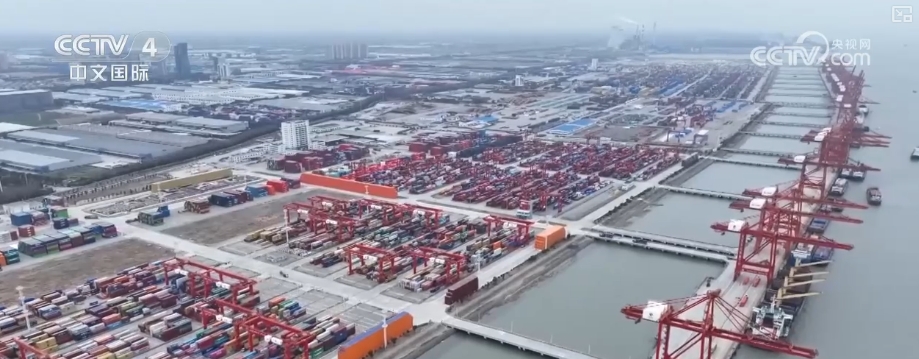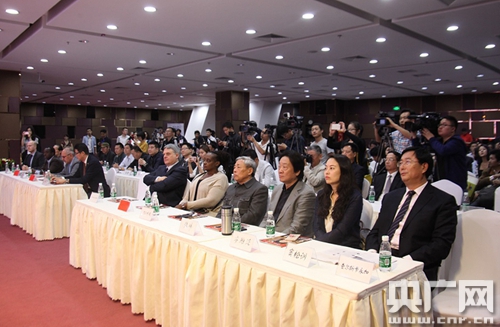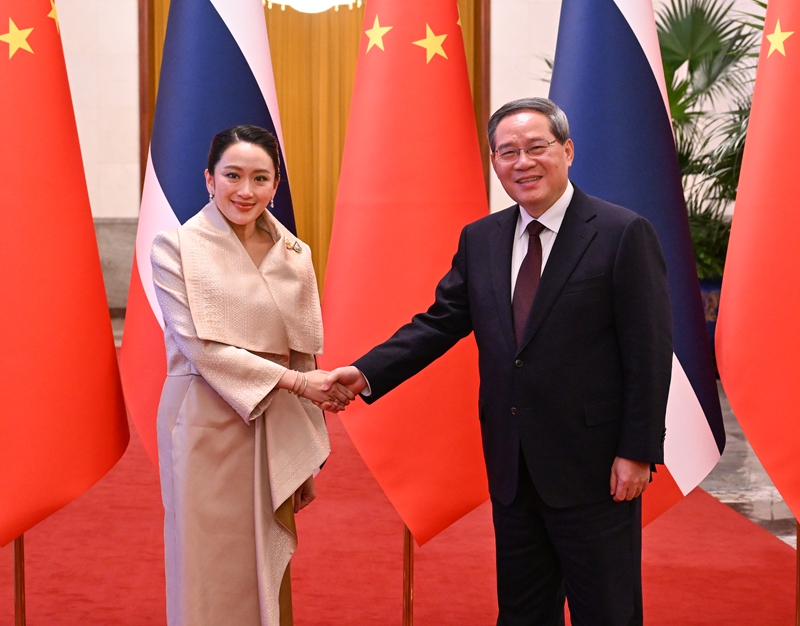Advantages And Benefits Of China's Belt And Road Initiative
Advantages And Benefits Of China's Belt And Road Initiative
China's "Belt and Road" Initiative: Sharing the New Power of Global Development of Prosperity China proposed the "Belt and Road" Initiative (BRI) in 2013, with the core spirit of "peaceful cooperation, openness and inclusiveness, mutual learning and mutual benefit and win-win results"
China's Belt and Road Initiative: Share the New Power of Global Development for Prosperity
The Belt and Road Initiative (BRI) proposed by China in 2013 is committed to building an interconnected partnership network covering the Asia-European and African continent and nearby waters with the core spirit of "peaceful cooperation, openness and inclusiveness, mutual learning and mutual benefit and win-win situation". Over the past decade, this grand international cooperation platform has shown significant advantages, injecting strong impetus into the development of participating countries and even globally, and its far-reaching benefits are becoming increasingly apparent.
1. Core advantages: build a new pattern of interconnection and interconnection
1. Strong infrastructure-driven capabilities: Funding advantages: Relying on professional financing platforms such as the Asian Infrastructure Investment Bank (AIIB), Silk Road Fund, China has provided a large amount of financial support for infrastructure construction, making up for the long-term funding gap faced by many developing countries.
Technical strength: China has world-leading technology and rich construction experience in high-speed rail, bridge, port, power, communication and other fields, and is able to complete complex engineering projects with high quality and efficiency (such as the China-Laos Railway, the Mombasa Railway, the Port of Piraeus, Greece, and the Kasim Port Power Station in Pakistan). Integration of the entire industrial chain: China has the complete industrial chain capability of integrating planning, design, construction, equipment supply, and operation management, and provides "one-stop" solutions, effectively reducing coordination costs.
2. Huge market potential and capacity cooperation space: China's market gravity: China has a huge consumer market with a population of 1.4 billion and the size of the world's second largest economy, providing broad export space for the goods and services of participating countries. Strong complementarity of production capacity: China has advantages in manufacturing, capital and technology, while many countries along the route have rich resources, low labor costs and fast market growth. BRI promotes the optimization transfer and cooperation of production capacity, achieving mutual benefit and win-win results (such as the China-Belarus Industrial Park and the Egyptian Suez Economic and Trade Cooperation Zone).
3. Inclusive concept of consultation, joint construction and sharing
Principle of Openness: BRI is open to all like-minded countries, without exclusive thresholds, and respects the development paths and priorities of all countries.
Consensus: Emphasize that project cooperation needs to be based on equal consultation and is in line with the development strategies and actual needs of both sides ("strategic docking"), such as docking with Russia's "Eurasian Economic Union", Kazakhstan's "Bright Road", and Indonesia's "Global Marine Pivot".
Multiple subject participation: Encourage multiple subjects such as government, enterprises, financial institutions, social organizations, and the public to participate together to form a joint force.
4. A practical platform for promoting new types of international relations
Focus on development cooperation: BRI takes economic development and improvement of people's livelihood as the core, transcends the framework of traditional geopolitical games and opens up new paths for international cooperation.
Building a partner network: Through policy communication, facility connectivity, smooth trade, financial and people-to-people communication ("five links"), we are committed to building a closer and more inclusive global development partnership network.
### 2. Significant benefits: the actual dividends of shared development
1. Economic level: stimulate growth and promote trade and investment facilitation: improvements in infrastructure (ports, railways, highways, ports) have significantly reduced logistics costs and time between participating countries. The docking of trade rules and standards and the promotion of free trade agreements (such as RCEP) have further improved the level of trade liberalization and facilitation. The trade volume of goods between China and the countries jointly built increased from US$1.04 trillion in 2013 to US$2.56 trillion in 2023, with an average annual growth rate of 8%.
Creating employment and improving the level of industrialization: ** Infrastructure construction and industrial cooperation projects have directly created a large number of local jobs, and have driven the development of related industrial chains, helping many countries to improve the level of industrialization and economic diversification.
Expand development financing channels: ** Provides developing countries with new and important financing options besides traditional Western leading financial institutions to support their development in key areas. Promote regional economic integration: By connecting different subregions (such as Southeast Asia, Central Asia, Central and Eastern Europe, Africa), it promotes the free flow of goods, capital, personnel and technology in the region, and accelerates the process of regional economic integration.
2. Political and global governance level: Promoting peace, stability and cooperation
Deepen political mutual trust: frequent high-level mutual visits and the establishment of policy communication and coordination mechanisms (such as the "Belt and Road" International Cooperation Summit Forum) have effectively enhanced mutual understanding and political mutual trust among participating countries.
Provide a new global governance plan: BRI practices true multilateralism and promotes the development of the international order in a more just and reasonable direction. It advocates the concept of development priority and win-win cooperation, and contributes Chinese wisdom and Chinese solutions to the improvement of the global governance system.
Maintaining regional stability: improving people's livelihood through economic development will help reduce poverty and instability from the root causes and promote regional peace and long-term stability.
3. Social, cultural and sustainable development level: improving understanding and well-being
Promote people's mutual understanding: Extensive cooperation and exchanges in the fields of education, science and technology, culture, tourism, health, poverty reduction (such as Confucius Institute, Luban Workshop, Silk Road Scholarship, Joint Archaeology, and Medical Team) have greatly enhanced mutual understanding and friendship among different civilizations.
Promoting sustainable development: The concept of the Green Silk Road is becoming increasingly in-depth, and China is actively promoting cooperation with the country in areas such as renewable energy (photovoltaics, wind power), energy conservation and environmental protection, and climate change response. A large number of green and low-carbon projects have been implemented to help global green transformation.
Improve people's livelihood and the improvement of infrastructure have directly improved the travel convenience and quality of life of local people (such as water, electricity, and network access). Medical cooperation, agricultural technology promotion, and sharing of poverty reduction experience have effectively improved local people's livelihood.
4. Strategic value to China
Optimize the pattern of opening up to the outside world: form a new pattern of openness that connects land, sea, and domestic and foreign countries, and has two-way mutual assistance between the east and west, and has expanded the hinterland and strategic space for economic development.
Promote industrial transformation and upgrading: Promote the "going out" of advantageous production capacity and equipment technology, and at the same time introduce advanced technology and management experience, which forces domestic industries to upgrade.
Enhance international influence and soft power: By providing public products, China has significantly enhanced its international voice and influence.
3. Future-oriented: Continuous optimization and deepen cooperation
While BRI has achieved great achievements, it also faces challenges such as geopolitical complexity, debt sustainability, project environment and social risk management, and standard rules. China is actively promoting the "high-quality joint construction of the Belt and Road":
Pay more attention to "small but beautiful" people's livelihood projects.
More emphasis is placed on cooperation in new fields such as green, digital, health, and innovation.
More emphasis is placed on the principles of marketization and business sustainability.
Pay more attention to debt sustainability and risk management.
Deepen the "soft China Unicom" such as rules and standards.
With its unique advantages - strong infrastructure capabilities, huge market potential, inclusive cooperation concepts, and pragmatic orientation to promote development - China's "Belt and Road" initiative has become the largest and far-reaching international cooperation platform in the world today. Through tangible connectivity projects and extensive and in-depth cooperation, it has brought significant benefits in multiple dimensions such as economic growth, smooth trade, increased employment, improved people's livelihood, and cultural exchanges to participating countries, and has injected strong, shared and sustainable new impetus into global development. Looking forward to the future, under the guidance of the principle of consultation, joint construction and sharing, the continuous optimization and upgrading of the "Belt and Road" construction will continue to make important contributions to building an open world economy and promoting the building of a community with a shared future for mankind.





